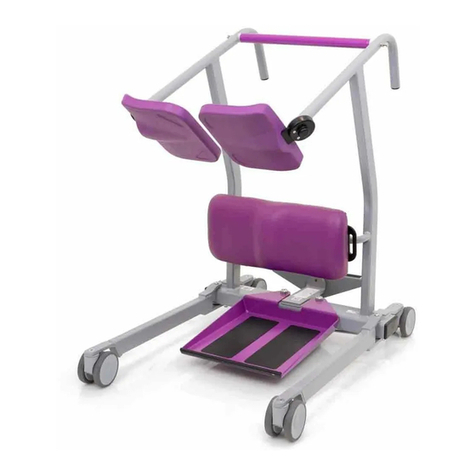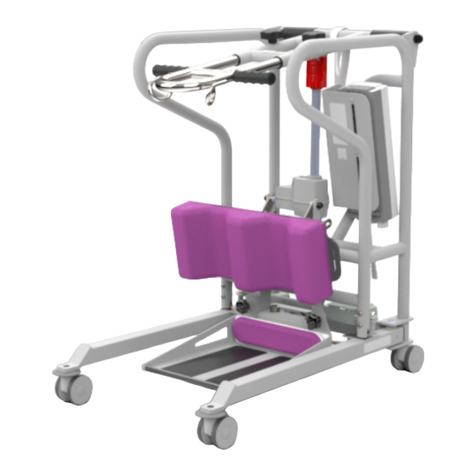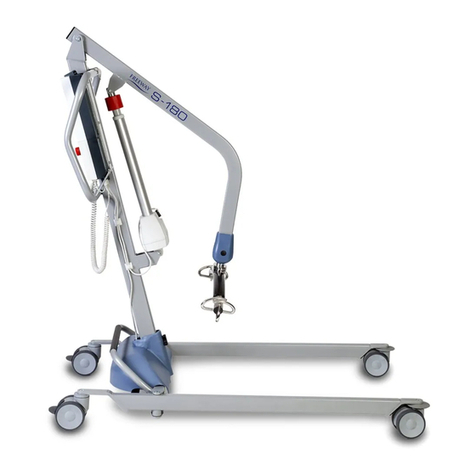© Prism Medical UK 2014
E Series User Manual Rev 03—Feb 2015 page 8
3.0 OPERATING INSTRUCTIONS
Freeway E-Series Mobile Hoist Range
Before use, you should familiarise yourself with use of the hoist the procedure for
opening / closing the leg sections and raising and lowering the hoist, including
emergency stop/lower and raise functions. Appropriate training in lifting and
handling procedures should be undergone by any person operating a mobile hoist
or sling, for their own and the clients safety and comfort. These instructions are
designed to cover the method of using of the Freeway mobile rather than good
manual handling practice.
3.1 To Alter the Leg Width
The leg adjustment is operated via the leg adjusting lever, positioned just below the
control box.
Hoisting manoeuvres can be completed with the legs in any position.
3.2 Positioning
1. Fit person to be lifted with a suitable sling. Instruction should be taken in the
fitting of slings to ensure maximum safety and comfort. A full assessment
should be carried out by a qualified person and carers should be trained in the
correct use.(See sling safety)
2. Select hoist leg position required. Position hoist near person to be lifted It is
recommended to position the hoist on a slight angle to prohibit legs hitting the mast /
actuator. Assuming you are lifting on a level surface “never“ use the brakes on the
hoist. This allows the hoist to align its self before lifting. Ensure ALL sling loops are
attached over the safety hooks on carry bar.
NOTE It is recommended to only use the brakes when carrying out lifts on / off the
floor OR for when the hoist is not in use & on charge.

































